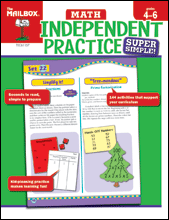 Obtuse and acute, am I right? I mean, median and mode. On average, I’d say I only get a fraction of the decimals divided and the remainder carry on. Maybe we should table this discussion before it multiplies out of control. The cardinal rule I am certain of when it comes to math literacy is that I do not have the capacity of even a closed figure to earn a degree. So terms such as denominator, isosceles, and quadrilateral leave me uncertain of an outcome I can predict with any probability.
Obtuse and acute, am I right? I mean, median and mode. On average, I’d say I only get a fraction of the decimals divided and the remainder carry on. Maybe we should table this discussion before it multiplies out of control. The cardinal rule I am certain of when it comes to math literacy is that I do not have the capacity of even a closed figure to earn a degree. So terms such as denominator, isosceles, and quadrilateral leave me uncertain of an outcome I can predict with any probability.
The language of math is intense and unique. Used improperly or inaccurately, it is sure to leave students confused and struggling. However, placing an emphasis on top-notch math literacy only helps create an ever-more-solid math foundation. While this is not why I became a language arts teacher, it is certainly one of the reasons I am glad I did.
Achieving high math literacy in the upper grades classroom requires skill, creativity, and dedication. So what are your tips that will help all math teachers reach this essential goal?
Math literacy. What are your classroom-tested ideas for reinforcing tricky terminology?
And speaking of math, Diane wants to know what’s your favorite math skill to teach at our “Be the Difference” blog. Comment and be entered in her latest giveaway!

As the state math assessment approaches, I do math vocabulary review bingo to help students recall math terms. The kids don’t realize they are learning because it is fun.
Next year, I will include math vocabulary quizzes for each math chapter/skill and spiral them through the year.